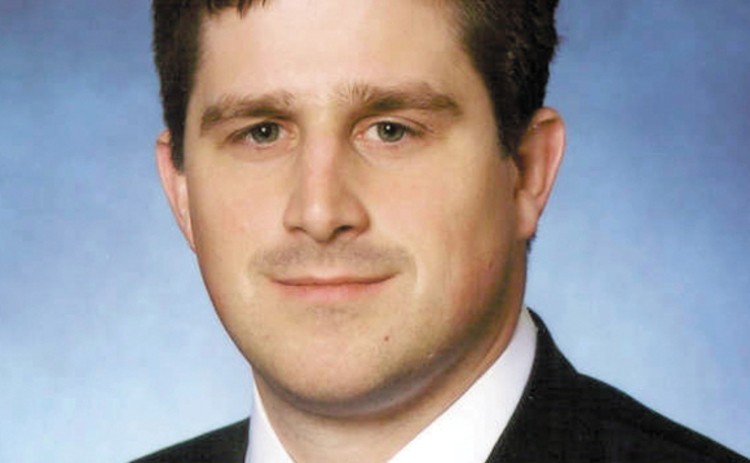Todd Sandoz is helping Lamont-Doherty Earth Observatory scientists change the way data is gathered, processed, and communicated by the Earth science community.

Todd Sandoz, a Managing Director at Barclays Investment Bank, has vast experience in the securities industry and an in-depth understanding of how cutting-edge computer science and data technologies are being applied to financial markets.
This background made Sandoz the perfect partner for Lamont-Doherty Earth Observatory scientists as they looked to address the challenges they were encountering due to the reams of data being gathered by their instruments.
While the application of computer science to Earth science is not new, “this was an amazing opportunity to explore applying advanced approaches in data science that are being deployed to financial markets to Earth science,” Sandoz said.
Sandoz’s desire to use his knowledge to solve problems in Earth science stems from his ongoing interest in and love of the outdoors. As a child, he spent a great deal of time in the Pacific Northwest where his family is from and often went fishing, hiking, and camping.
Sandoz graduated from Yale University, where he majored in economics and went to work for Citadel, a hedge fund based in Chicago. His experience in equity derivatives and convertible bonds then landed him in Hong Kong for nine years working for Credit Suisse. Subsequently, at Credit Suisse in New York City, he was in charge of global equity shares trading and electronic trading, and later had co-responsibility for the Americas Equities business.
While in New York, Sandoz met and became friends with Peter de Menocal, a climate scientist and Director of the Center for Climate and Life at Lamont. Sandoz spent time with de Menocal on the Lamont campus, as did his older son, who participated in the Center’s high school intern program and is now considering a future in Earth science.
Credit Suisse then moved Sandoz into the Fixed Income business, where he was based in London and had responsibility for Global Foreign Exchange and Short-Term Rates Trading business. After a few years, Sandoz moved to Nomura, with responsibility for their Global Equities and Execution Services business, which returned him to New York City.
A bout with colon cancer in 2016 forced Sandoz to take a hiatus from the financial industry. While he was recovering, he pursued other interests, which included ventures in FinTech as well as spending more time visiting Lamont. One day on campus, he met with physical oceanographer Ryan Abernathey and other scientists who were discussing building their own data center. Sandoz felt there might be a more effective way for the scientists to deal with their big data challenges.
Advances in computer science over the last five years, such as the ability to store almost unlimited amounts of data, the evolution of machine learning and parallel computing, have led to exponential leaps in what scientists can accomplish. Sandoz’s experience with statistical arbitrage trading and electronic trading, which drove a rapid adoption of advanced computer science, not only gave him a first-hand perspective on its potential, but also an extensive network of its practitioners.
Sandoz proposed that instead of building a data center, the researchers talk with people working in data science. Together they would figure out how to involve computer science talent on research projects and create tasks employing the latest techniques and computational analyses.
Sandoz considers Abernathey a “brilliantly talented scientist,” and gives him credit for being willing to consider alternative approaches to the data analysis problem. “From my perspective, Ryan really took the lead on making this collaboration happen, pulling it together and driving it.”
“I’ve enjoyed the opportunity to get more involved with Lamont scientists and their research and I look forward to continuing to deepen that involvement over time.”
The conversations with Abernathey and his colleagues led Sandoz to make a gift to the Center for Climate and Life to launch a critical component of the Real-Time Earth initiative, the Computational Technology Intern Program. The program pairs undergraduate and graduate computer science students with Lamont researchers to help the scientists answer research questions that in the past were often stymied by the lack of sufficient computing power. The interns gain paid, hands-on experience with challenging scientific research and developing solutions to Earth science data problems through cloud computing. The first cohort of students worked with Lamont scientists on three ongoing research projects in Fall 2018. A second cohort will continue this work in 2019.
Sandoz thinks the Real-Time Earth initiative could change the way scientists gather, process, and communicate data within the larger Earth science community. “Real-Time Earth could really accelerate the way some of these larger questions can be explored,” he said. “It can help scientists become more efficient in the way they process information, study problems, make discoveries, and give ranges of expectations around conclusions of some of these important questions—and that is absolutely critical.”
Sandoz encourages people interested in the science happening on the Lamont campus to invest in it. Doing so at any level, especially at a time when federal funding is declining, makes a difference because it can facilitate the sort of experimental, high-risk, high-reward research projects that lead to transformational discoveries.
Sandoz also finds the relationships he’s built and the knowledge he’s gained through his work with Lamont and the Real-Time Earth initiative fulfilling.
“I’ve enjoyed the opportunity to get more involved with Lamont scientists and their research and I look forward to continuing to deepen that involvement over time.”
— Renee Cho is a freelance writer who also contributes to the Earth Institute’s State of the Planet
